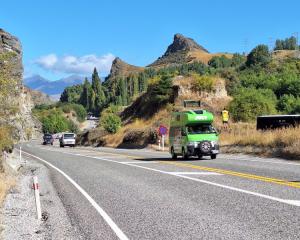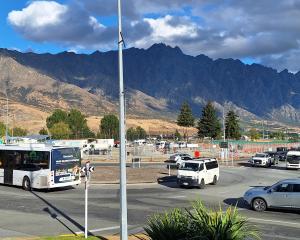
An intelligence report compiled by the Gang Intelligence Centre was released to the Otago Daily Times following an Official Information Act request for information about any expansion in gang presence in the Otago Lakes Central police area since the start of the Covid pandemic.
Dated November 2021, the report warned the area’s tourism and hospitality sectors were vulnerable to infiltration by organised crime because of Covid-caused financial distress.
Struggling businesses could be loaned money or bought outright, enabling them to be used as fronts for money laundering or drug dealing, the report said.
"There remains information gaps regarding this activity in the Otago Lakes Central area, however ongoing economic uncertainty and anxiety likely means this remains a risk for struggling businesses and business owners," it said.
Compared with the Otago Coastal and Southern areas, the Otago Lakes Central area had a limited permanent gang presence, with 15 patched and prospect members, but there had been an increase the number of gang-linked visitors to the area, the report said.
The perceived glamour of the region was a potential drawcard for gang members using social media to promote their lifestyle.
While strong educational achievement levels by rakatahi (youth) and limited deprivation in the area reduced the appeal of gangs, pandemic-related economic uncertainty and stresses caused by rising house prices could be contributing factors.
Wastewater testing in Queenstown showed the area had one of the highest rates of MDMA and cocaine use in the country.
While some of that was because it was a tourist destination with a nightlife scene, there was also likely to be a strong domestic market.
Data from 2020 showed gang members in the area only accounted for 1.31% of drug crime in the area and their crimes were mainly limited to cannabis offending — but it was likely other types of drug offences went unreported, the report said.
Gang members in the area were involved in 2.5% of all family harm occurrences, despite accounting for 0.02% of the population.
A police spokeswoman said since the end of Covid lockdowns, the tourist industry had rebounded well and police had not been made aware of any gangs moving into the hospitality sector during or after.
While gang members had been noted coming to the area on several occasions, they were not staying for prolonged periods of time, the spokeswoman said.
If police did become aware of the hospitality sector being infiltrated, the priority would be to keep the community safe and address any criminal activity.
"We would expect information to come to and be passed on to local police if there were any serious concerns," she said.
There were no addresses which were identified as gang headquarters in the area and police monitored gang visits to the area, such as motorcycle-related events, which did not involve long-term residency.












